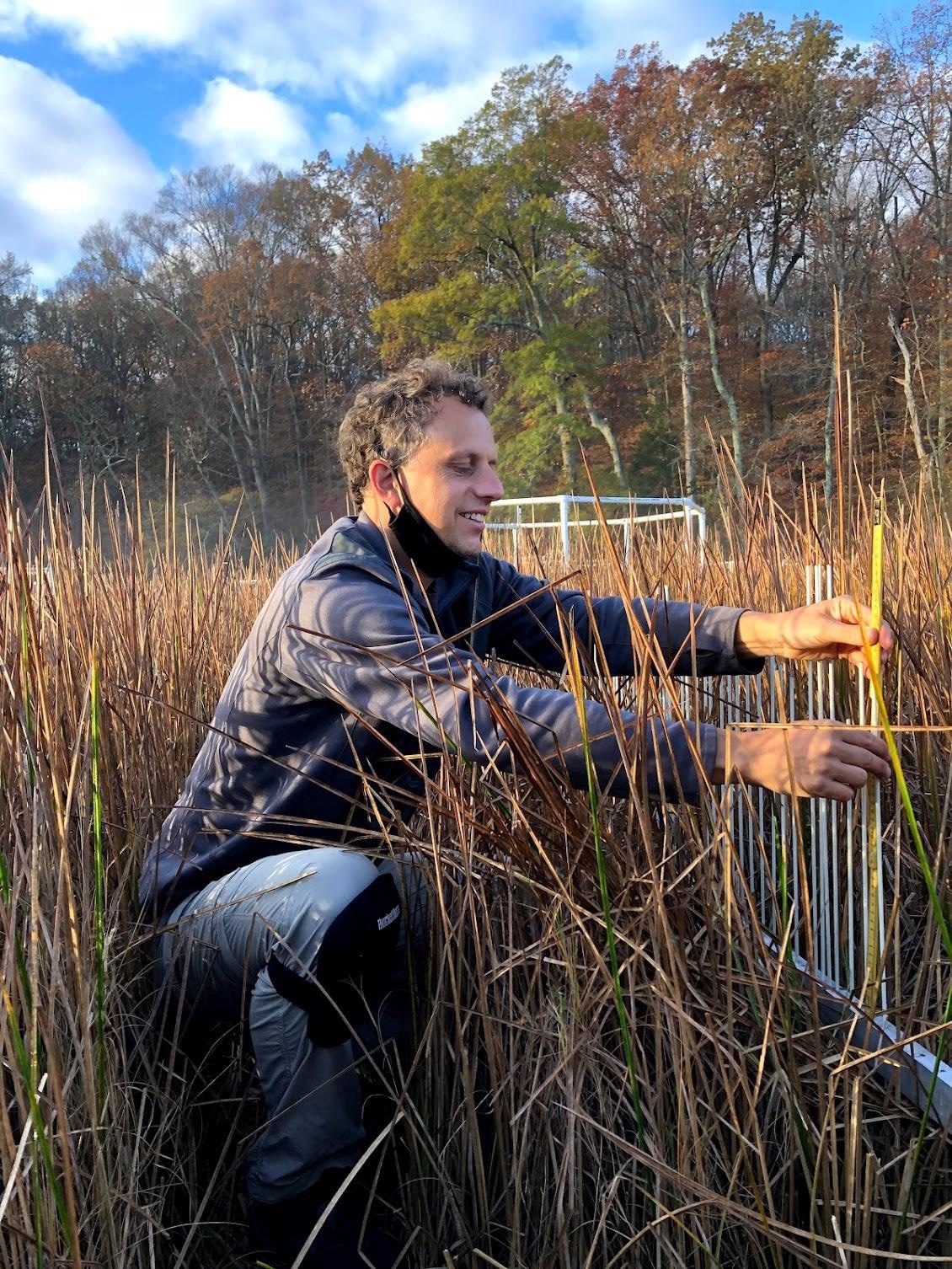Reviewed by Alex SmithMay 19 2022
Wetlands throughout the globe are at risk of drowning from rising sea levels. However, for decades, researchers believed that one more aspect of climate change — growing carbon dioxide (CO2) — could trigger additional plant growth. This allows coastal wetlands to grow pretty quickly to outpace sea-level rise.
 Adam Langley, an ecologist at Villanova, takes soil elevation measurements at the Global Change Research Wetland. Image Credit: Mikayla Manyin.
Adam Langley, an ecologist at Villanova, takes soil elevation measurements at the Global Change Research Wetland. Image Credit: Mikayla Manyin.
That useful side effect seems to be vanishing, the researchers found in a new study reported on May 18th, 2022.
“Too much water is a stress, an environmental stress, for plant response to high CO2,” said Chunwu Zhu, lead author of the report in the Science Advances journal. Zhu is a biologist associated with the Chinese Academy of Sciences, who performed the study while on a fellowship with the Smithsonian Environmental Research Center (SERC).
Preserving wetlands is crucial both to fight climate change and also adapt to it. Apart from offering habitat, wetlands tend to sequester huge amounts of carbon and safeguard people from some of climate change’s more extreme effects, like typhoons and hurricanes.
Although they occupy just a fraction of the Earth’s surface, they provide outsized ecosystem services, which are basically benefits to people. And we value them partly because, by protecting a relatively small part of the Earth, we can have big positive impacts on the environment.
Pat Megonigal, Study Corresponding Author and Biogeochemist, Smithsonian Environmental Research Center
Carbon Dioxide’s Diminishing Returns
The study took place at SERC’s Global Change Research Wetland, a research site Megonigal runs on the western shore of Maryland. The wetland is the habitat of numerous futuristic experiments, where scientists tend to simulate the climate of 2100.
For this study, the scientists relied on an experiment that commenced in 1987. This is the longest-running field experiment in the world on how increasing CO2 affects plants. Within 15 open-top chambers, researchers have been increasing CO2 concentrations by an extra 340 parts per million. This is approximately doubling the atmospheric CO2 levels of 1987.
Another 15 chambers act as controls, having added CO2. The team concentrated on the 10 chambers along with “C3” plants — a group of plants known to respond strongly to high CO2 including approximately 85% of plant species on Earth.
For nearly the first 20 years of the experiment, plant growth in the higher CO2 chambers thrived. Above ground, plants in the high- CO2 chambers grew on an average of 25% more than plants in the untreated chambers.
Also, the effect was even more influential underground: High CO2 activated nearly 35% more root growth. Root growth is considered crucial for wetland survival, as roots tend to help wetlands build soil and hold the foundations growing upward even as seas continue to rise.
Even though elevated CO2 contributes to sea-level rise, it also enhanced the marsh’s ability to accrete vertically during the early years of the experiment.
Don Cahoon, Study Co-Author and Research Ecologist, US Geological Survey
However, after 2005, the effect dropped and disappeared. In the study, for the last 14 years of data gathered, there was no average variation in plant growth between the high- CO2 and normal chambers.
The CO2 effect has always been one of the silver linings of climate change. Well, at least plants are going to grow more. But we see here that they didn’t. So the silver lining to me just got a little cloudier.
Adam Langley, Study Co-Author and Ecologist, Villanova University
The researchers analyzed various possible explanations for the drop-off — precipitation, temperature, the saltiness of the water at the time of the increasing season, or the existence of crucial soil nutrients, like nitrogen. Sea-level rise alone displayed links to plant growth. As soon as sea levels at the wetland increased 15 cm above where they started in 1987, the advantages of greater CO2 vanished.
In some ways, this is a race. A race between what CO2 can do and what sea level can do.
Lewis Ziska, Study Co-Author and Plant Physiologist, School of Public Health, Columbia University
Escaping the Flood
Sea-level rise increase hinders additional growth for quite a simple cause. As waters rise, wetlands tend to flood more frequently. Plants require oxygen and CO2 — and wetland plants evolved to get the majority of their oxygen from the air instead of water.
Megonigal stated, “Plants are aerobic, oxygen-breathing organisms. And that includes their roots. And so they’re fundamentally faced with this problem of having their root system in an environment that doesn’t have any oxygen in it.”
Some wetlands might be capable of escaping drowning. If wetlands cannot rise higher by building soil, migrating inland is one more possibility. But that can only take place if they have sufficient space. For several communities, enabling room for wetlands to shift in would need a shift in how they utilize and value the land.
Meanwhile, Earth’s climate accountants will need to rethink the carbon budget of the planet. At present, researchers are well aware that extra CO2 does not frequently stimulate wetland growth as much as they believed, how much carbon wetlands could absorb in the coming decades remains even more unclear.